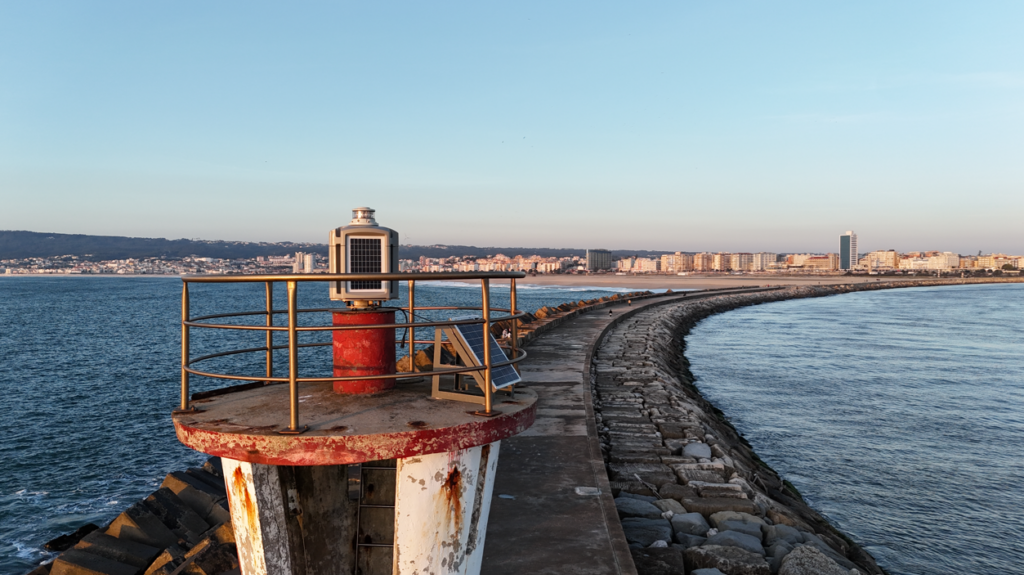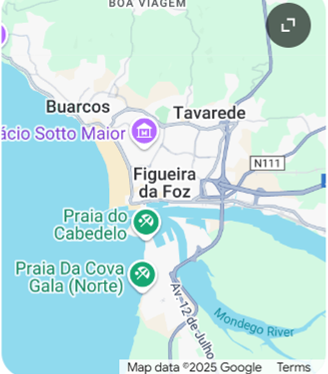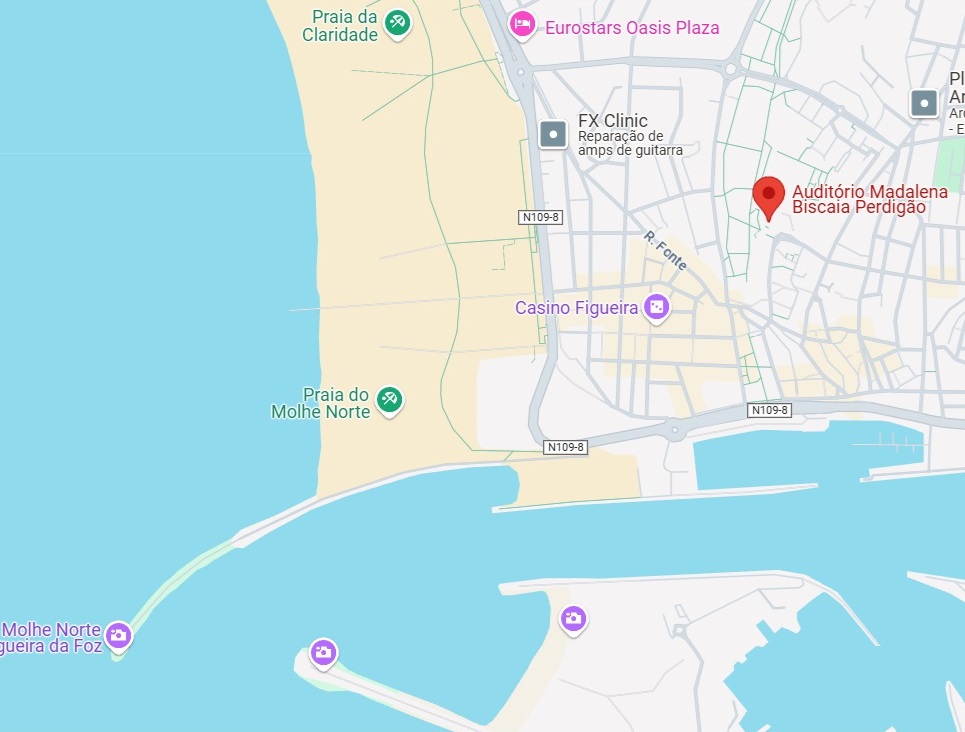FIGUEIRA DA FOZ

Figueira da Foz or just Figueira is the second largest city in the district of Coimbra, in Portugal.
It has a population of 46,600 hab in an area of 379.05 km2.
Situated practically at the midpoint of the Iberian Peninsula’s Atlantic coast, it is located at the mouth of the Mondego River, 40 km west of Coimbra and sheltered by hills (Serra da Boa Viagem).
mais informação: Câmara MFF e/ou Turismo
Campus da Universidade de Coimbra na Figueira da Foz
Figueira da Foz on the Iberian Peninsula



some history:
The place’s name is due to a fig tree, which stood at the quay of Salmanha, where the fishermen used to tie up their boats. Foz is often used at the point a river meets another body of water as Mondego in Atlantic Ocean. Some historical traces show that people were settling in this region since the Neolithic age. The mouth of the Mondego played a central role in the fixation of men in this region and for the formation of settlements. Morraceira Island, nowadays is a place of blue economy industries, such as aquacultures.
some notes:
Figueira da Foz had a huge development during the 18th and 19th centuries due to the immense port movements and the expansion of the shipbuilding and cod drying industry, supplying the city with new communication routes, housing and other facilities. It was elevated to vila (small town) on 12 March 1771 and turned city on 20 September 1882. Discovered as a sea resort by the end of the 19th century, it gained a great reputation in the 1920s and 1930s. The city had the Portuguese nickname Queen of the Beaches.
The municipality has some noted landmarks: several Palaces and Manor Houses (like the Sotto Mayor Palace); the old fishing village and the old Fortres in Buarcos; the Santa Catarina Fort; the Relógio Tower by the main sandy beach; several Churches, many of them in the rich Baroque style; a Municipal Museum with the archaeological, ethnographic and artistic collection; Serra da Boa Viagem, a small forested mountain by the Atlantic Ocean; several beaches as well as several green spaces and small gardens like those in the area of Abadias; and its large seaside promenade paved with typical Portuguese pavement.
The city is an important industrial centre, producing wood pulp and paper (Navigator, formerly and still commonly known as Soporcel, and Celbi, part of Altri) and glass (Verallia, part of Saint-Gobain). It also has notable naval construction and fish industries. Until the turn of the 21st century, a factory of the CIMPOR Group was installed in the Mondego Cape (Cabo Mondego). The seaport and the fishing harbour are also important for its economy. With its old and renowned casino (Casino da Figueira), the marina, several hotels, restaurants and other tourist facilities, Figueira is actually a very important Atlantic beach resort, in the center of Portugal’s Silver Coast/Costa de Prata tourism region. A generally windy coastal area, its relatively cold seawaters are particularly renowned as a surf and kitesurfhotspot in the same fashion as other places throughout the west coast of Portugal, such as Nazaré, Peniche or Ericeira. In July and August, its main beaches are usually packed with beachgoers too.
.
